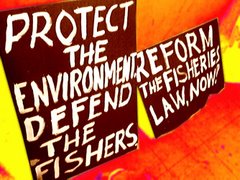
Rationale
With issues of climate change and environmental degradation brought into the limelight, calls for a shift in policy frameworks, development paradigms and lifestyles become ever more urgent. Such issues highlight a global problem with increasingly felt local impacts: heavier rains, flashfloods, sea-level rise, spread of infectious diseases, and scarcity of resources with heavy reliance on unsustainable fossil fuel for energy needs.
Taking in these concerns, there is growing international consensus on the urgency of developing low carbon, resource-efficient, and socially inclusive economies as expressed in an emerging “Green Economy” framework. This poses a critical challenge to existing development models that measure progress only by looking at the GNP and GDP as indicators, without considering the sustainability of societies. The message of the “Green Economy” model is simple: not all investments are good investments! In fact, most of our society’s economic wealth has been generated through the overexploitation and pollution of our environment, at the expense of the most vulnerable sectors which bear the brunt of the impacts. Taking sustainable development as a guiding principle, a “Green Economy” framework requires the strengthening of three inseparable pillars: economic development, social development and environmental protection.
The search for local solutions to these problems led to the formation of the Cebu Green Economy Series, a string of events that allows stakeholders to discuss relevant issues linking environment, society and economy. Its aim is to explore “rapid but low risk” alternatives to the destructive ways in which society has carried out developmental projects that exploit the environment and marginalize the poor. Under the Cebu Green Economy Series, we address themes such as: 1) clean and alternative energy; 2) green jobs and investments; 3) food security; 4) sustainable transportation; 5) sustainable waste management and resource conservation; 6) eco-friendly built environment and architecture, and 7) liveable cities and urban environment, to name a few.
To start the series, we are organizing a Renewable Energy (RE) Summit with the theme “Meeting the Challenges of Sustainable Energy Development in Central Visayas” on March 7-8, 2011 at the SM City Cebu Trade Hall, Cebu City.
Through this summit, we aim to achieve the following objectives: 1) to develop mechanisms and infrastructure for enabling a market for RE; 2) to map out resources and potentials for RE development in Central Visayas; and 3) to formulate an action plan for promoting RE as the best alternative to heavy and unsustainable reliance on fossil fuels for energy needs.
To meet these objectives, this multi-stakeholder event, involving key representatives from local government units, civil society and business sectors, will provide a venue for plenary and panel discussions on topics such as the power situation of Central Visayas, the Renewable Energy Act of 2008, and public-private partnerships on RE projects, within the larger framework of promoting “Green Economy”. There will also be a two-day exhibition highlighting best practices for the implementation of RE programs in communities, LGUs and NGOs. Companies, banks, financial institutions and other organization that have products and services that advance the development of renewable energy are welcome to join the exhibition. The activity will be capped by a keynote address hopefully to be delivered by Department of Energy Secretary Jose Rene Almendras and Senator Juan Miguel Zubiri. Details of the program will be disseminated.
For reference:
The Secretariat
Hon. Ma. Nida C. Cabrera, Cebu City Councilor (Chair- Environment Committee)
(032-2551655, 032-2532206)
A2D Project—Research Group for Alternatives to Development
c/o Kaira Zoe Alburo, Executive Director (09202709388)
Central Visayas Fisherfolk Development Center
c/o Vince Cinches, Executive Director (09228463900)
Philippine Earth Justice Center
c/o Atty. Gloria Estenzo-Ramos, Executive Director (09189111267)







